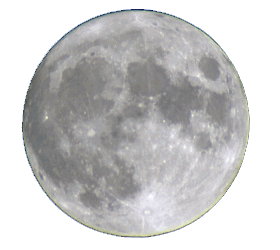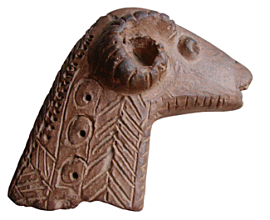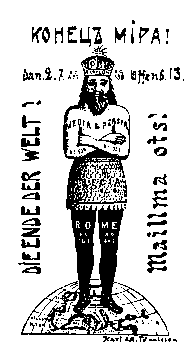Mäetagused vol. 46
Summary
-
The Pleiades as Openings, The Milky Way as the Path of Birds, and the Girl on the Moon: Cultural Links Across Northern Eurasia
Juri Berezkin

Key words: Asian-American cosmonymic links, folk astronomy, lunar spots, prehistory of Northern Eurasia, the Milky Way, the Pleiades
The Baltic-Finnish and the Baltic (Latvian and Lithuanian) cosmonyms mostly coincide while the Baltic and Slavic cosmonymic patterns are different. The Pleiades in the Eastern Baltic are “a sieve”, the Milky Way is “the path of migratory birds” and a girl holding water pails is seen on the Moon. Across most of Central, Western and Southern Europe the Pleiades are “a hen with its chicken”, the Milky Way and the lunar spots have other (and different) interpretations. The Eastern Baltic pattern is identical with the Middle Volga one where it is widespread among both Finnish-Permian and Turkic groups and probably relates back to the (Proto-Baltic?) culture of the Iron Age. However, parallels for the cosmonyms in question are found across most of Northern Eurasia and find corresponding similarities in some parts of North America. “Water-carrier on the Moon” is the most widespread of these motifs being known in Japan and Polynesia. In Eurasia, the Northern Samoyeds noticeably lack all three images. The initial emergence of at least some of the cosmonyms under discussion in the Terminal Pleistocene of northern East Asia and their further dissemination towards the West, down to the Baltics, is a hypothesis to be checked.
-
- On the Methods of Constructing a Mythological Text: Slavic Folk Beliefs regarding the Spots of the Moon
Aleksandr Gura
Key words: lunar spots, mythology, Slavic folklore
The dark spots visible on the surface of the full Moon have been diversely interpreted in the Slavic folk calendar, with a partial overlapping being noted upon the consolidation of relevant thematic groups. The article provides an overview regarding the explanations, concerning the origin of lunar spots, widespread among the Slavic people. The comparative analysis of the Slavic narratives on lunar spots indicates the distribution of the text into different morphological elements, enables the ascertaining of mutual correlations and combinations, and shows how they are being used to “assemble”, construct texts in different regional traditions, determining the “grammatical” structure of the mythological text as a whole.
-
- The Churl’s Wagon

Andres Kuperjanov
Key words: churl, constellations, ethno-astronomy, saint, sant, wolf beside the ox
Suur Vanker (‘the Great Wain’ in Estonian, the Big Dipper) is a commonly known constellation in Estonia. In addition to Suur Vanker, the astronym Hunt Härja kõrval ‘Wolf beside the Ox’ is one of the oldest written recordings of ethno-astronomic designations. The tale about farmer Peedu and his wagon, formalised and elaborated by Jakob Hurt based on his collections, has been printed in school textbooks since the issuing of Mihkel Kampmann’s reading book, Kooli lugemise raamat at the beginning of the previous century. Thus, the story is widely known and has been simultaneously considered an Estonian astral myth.
-
- On the Cosmic Hunt in North Eurasian Rock Art
Enn Ernits
Key words: Cosmic Hunt myth, Far East, Karelia, Mongolia, prehistoric religion, rock art, Siberia
The article treats the possible reflections of the Cosmic Hunt myth in the rock art of Karelia, Siberia, the Far East and Northern Mongolia. The analysis comprises the more interesting groups of depictions, located on the coast of Lake Onega on Cape Peri Nos III, and on the northern Cape of Besov Nos, in Old Zalavruga by the White Sea, in the river basin of the Lena River in Central Siberia and elsewhere. A conclusion is reached that due to the fading of the contents of the myth and the specifics of rock art it is difficult, if not impossible, to prove the relevant connection. Therefore, it might be concluded that in the written materials many motifs of rock art have too easily been associated with the Cosmic Hunt myth.
-
- Time and Cosmos: A Zoomorphic Cosmological Monument of the Late Antiquity
Nikolai Sivkov
Key words: calendar, centre of the ecliptic, constellations, North Pole, protome of the ram
The protome of the ram from West Bulgaria is a lunisolar calendar of parapegmatic type from the period of antiquity (2nd–4th century AC), which imparts encoded calendrical, cosmological and cosmogonic information.

On the protome there are marked synodic, sidereal, and draconic months; lunar, solar and draconic years, as well as different time periods – seasons and cycles. One of the images on the protome’s body can be interpreted as an image of the Draco constellation around the fixed point of the North Pole in the centre of the ecliptic. The symbols of seven luminaries – the Sun, the Moon and five planets – which were known at the beginning of the first millennium are also featured on the protome.
In the context of the monument, the presence of the astronomical concept of the world axis and the centre of the ecliptic means that the creators of the ram’s protome perceived it as an omphalos, the sacred centre of the world, the zoomorphic model of the world mountain and the world tree. The suggestion is confirmed by the structural particularities of the protome, by the images of mythological characters and by scenes of cosmogonic motifs. The given artefact represents the conceptualisation of the world in a generalised, syncretised and interdisciplinary way through the language of astronomy, mythology and calendaristics.
In the period of antiquity, time and space were perceived as a united integer and as an endless divine beginning connected with the universe and its divine essence. The calendar is an attempt to comprehend the phenomenon of an infinite and cyclic time and use it in practice during the terrestrial life.
-
- Bulgarian Wooden Calendars
Vesselina Koleva
Key words: calendar stick, fixed feasts, Orthodox Church calendar, rabosh, wooden calendar
The article presents a short review of the characteristic features of Bulgarian wooden calendars. Particular attention has been paid to the structure of calendar records and special signs marking the fixed feast days throughout the year in the Orthodox liturgical calendar. A group of calendar sticks from the central part of the Rhodope Mountains, repeatedly used during the 19th century, illustrate this little known folk tradition. Parallels are drawn with wooden calendars from other countries.
-

- The last Minutes of our Earth
Mare Kõiva
Key words: end of the world, Karl Tõnisson, leaflet, prophecy, prophets, The Last Minutes of our Earth
The article seeks to compare popular omens of the end of the world with the auguries of prophets. Both traditions reflect societal and cultural changes, the fears for doomsday tend to integrate new interpretations and causes for destruction. Astronomic celestial phenomena retain their relevance whereas the recent discoveries in astronomy, physics, genetics and other sciences have remarkably complemented the list omens for the end of the world. Latter-day prophecies leashed by human behaviour and intellect, alien civilisations and other relevant motifs have come to the forefront during the last century. Prophetic predictions propose fixed dates, represent certain political or ideological trends, associated with social norms and evoked as a result of changes therein. Among the prophetic messages there are stereotypical expressions and omens which have been adapted and attributed to different persons. Karl Tõnisson’s leaflet Meie maakera viimased minutid ‘The Last Minutes of Our Earth’, printed in 1907, is a political-apocalyptic contemplation based on scriptural passages substantiated by references to scholarly works, illustrated with five woodcuts. The omens of the end of the world, listed by the author, comprise an earthquake in Lisbon in 1795, a dark day in New England in 1780 and the 1833 meteor storm in America. The discussions presented in the leaflet differ from Tõnisson’s later self-centred political fantasies on Pan-Baltonia, and the ideology and rhetoric of the booklets endeavouring to create a native religion merged with Buddhism.
-
- Children’s Thinking. Clouds, Rain, and Rainbow in Children’s Explanations
Eve Kikas
Key words: children’s thinking, clouds, everyday concepts, rain, rainbow, scientific concepts, syntethic concepts
The article describes the learning process of children, and the associated difficulties in the transfer from everyday thinking to scientific. Everyday explanations (direct descriptions of phenomena, fragments heard from adults, analogy-based explanations) are prevalent in preschool children. In school, children begin to learn scientific (non-experiential) knowledge and develop the scientific level of thinking. This is a long and time-consuming process, in the course of which children continue to use everyday explanations, adding to them synthetic concepts and explanations. The relevant theory is illustrated by analysing the explanations of children with regard to clouds and rain as conventional meteorological phenomena, and the rainbow as an extraordinary and attractive object which deserves attention. Individual interviews were conducted with 116 primary school students. The results show that everyday and synthetic explanations are predominant in primary school children, with the relevant reasons being pointed out.
-
About us
-
Interview with Anu Korb on her 60th birthday
Anu Korb, folklorist and frequent visitor to Siberian Estonians, who celebrated her 60th birthday on 27 November, is interviewed by Ave Tupits.
-
-
In memoriam. Nikolai Konakov (2. XII 1946 – 10. VIII 2010)
Eulogy on Nikolai Konakov, Komi ethnologist and folklorist who passed away on 10 August. He was a man who had long-term cooperation ties with the Estonian National Museum, ethnographers and researchers of religion.
-
News, overviews
-
Birthday Greetings!
Ellen Liiv (80), Pille Kippar and Ingrid Rüütel (75), Vilmos Voigt (70), Enn Ernits (65), Anu Korb and Tarmo Kulmar (60), and Marju Kõivupuu (50).
-
-
Recording the Masquerade
Mare Kõiva and Andres Kuperjanov provide an insight into the fieldwork conducted this January in the Bulgarian town of Pernik during the masquerade festival.
-
-
International Humor Conference 2010 in Hong Kong
Piret Voolaid gives a brief overview of the 22nd annual conference of the International Society for Humor Studies (ISHS), participated in by more than 200 researchers.
-
-
European Estonians’ Singing Camp in Golden Prague
Iivi Zajedova writes about the choir and singing camps of the Estonian living in Europe.
-
-
Calendar
A brief summary regarding the events and activities of Estonian folklorists from July to December 2010, including the BA and MA theses defended this autumn.
-
-
A Book on Balkan Astronyms
Mladenova, Darina. Zvezdnoto nebe nad nas. Etnolingvistichno izsledvane na balkanskite narodni astronimi. [The Starry Sky above Us. An Ethnolinguistic Study of Balkan Folk Astronomy.] Sofia: Prof. Marin Drinov 2006. 421 pp.
The analysis is provided by Andres Kuperjanov.
-
-
Manors, Manor Lords and Peasants
Mõisalegendid. Harjumaa. [Manor Legends. Harju County]. Compiled by Mari-Ann Remmel. Designed by Angelika Schneider. Tallinn: Tänapäev 2008. 503 pp.
The reviewer of the book is Eda Kalmre.